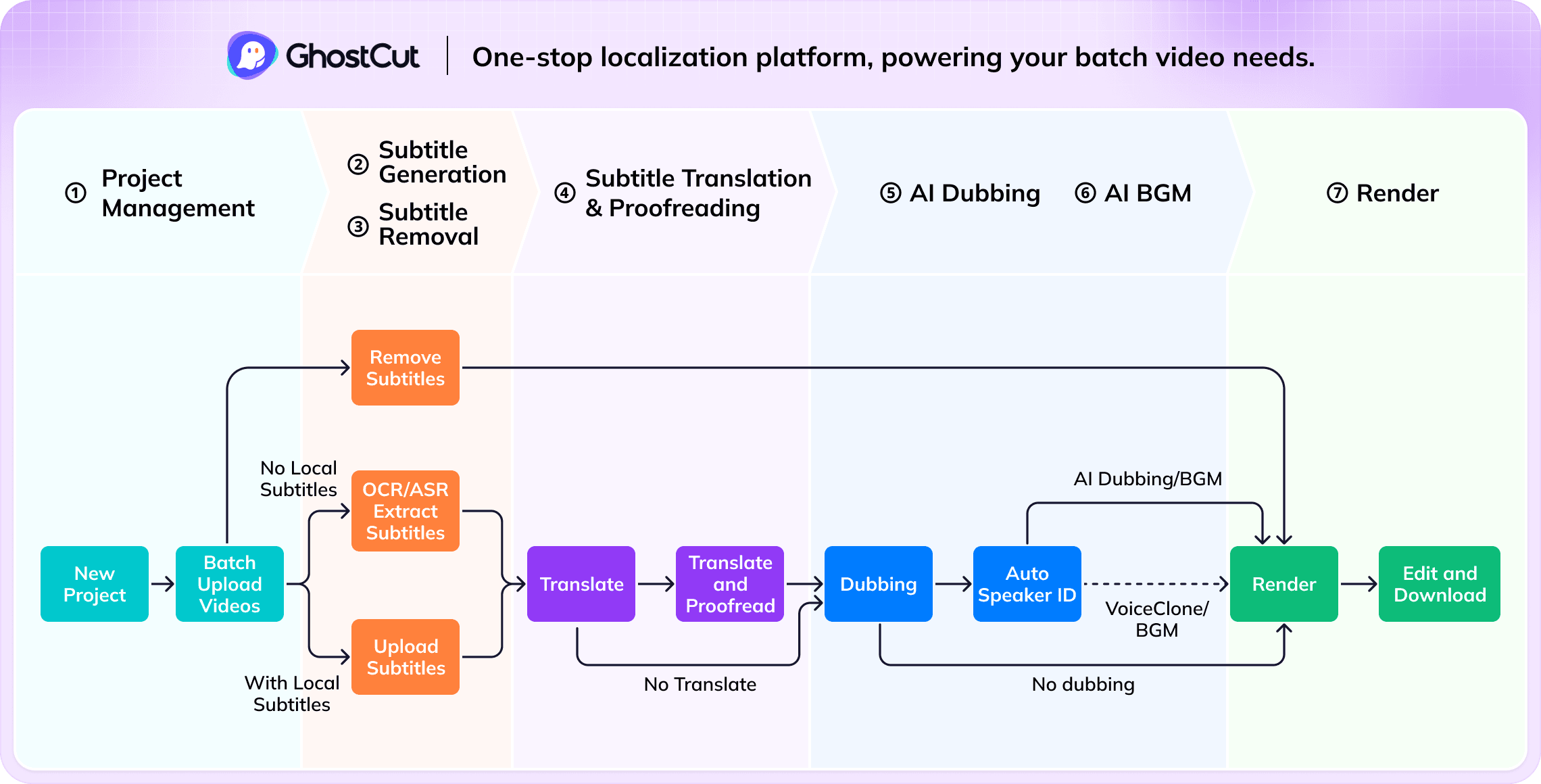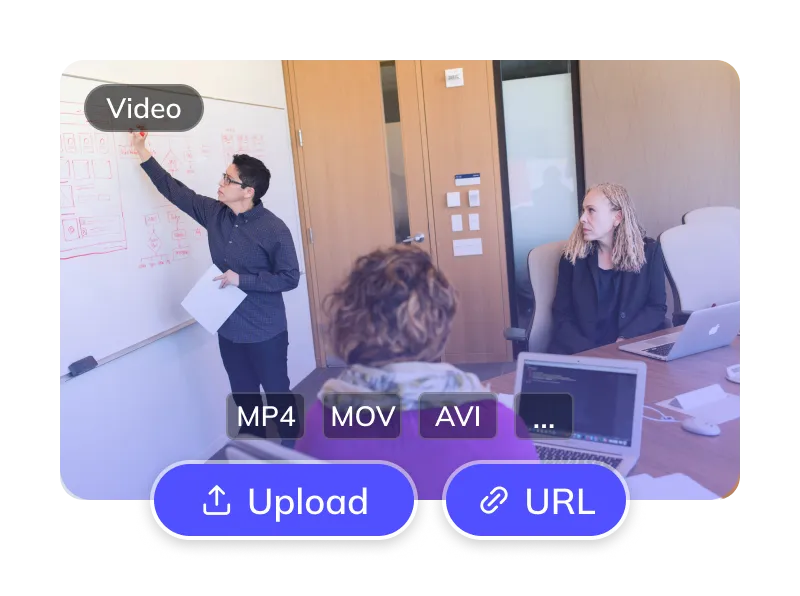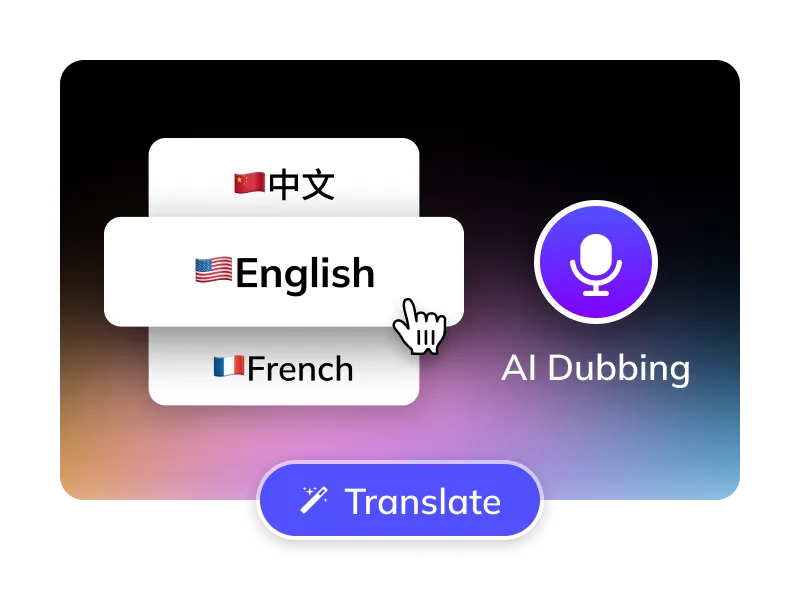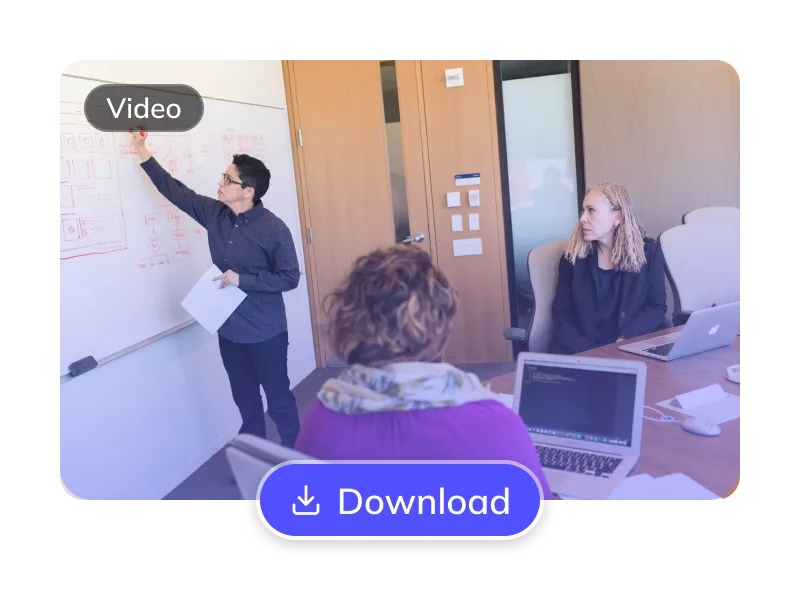How to Translate Arabic Videos to English ?
Translate Arabic Videos to Traditional-Chinese in 3 Easy Steps
Trusted by 1,500,000+ Global Creators and Businesses
Why GhostCut for Your Video Translations?
GhostCut is your all-in-one AI solution for translating Arabic content into natural, engaging Traditional-Chinese.
Effortless Project Management
Manage Arabic assets, subtitles, & Traditional-Chinese videos. Batch process projects efficiently.
Pinpoint Traditional-Chinese Accuracy
Up to 99.5% accurate. Optimized for Arabic-to-Traditional-Chinese with LLM calibration & multi-agent review for culturally fluent Traditional-Chinese translations.
Lifelike Traditional-Chinese AI Dubbing
Choose from diverse, human-like Traditional-Chinese AI voices (US/UK accents). Emotion-cloning technology captures original tone for natural Traditional-Chinese delivery.
Flexible Arabic Subtitle Options
Optionally erase original Arabic hardsubs for a clean slate. Translate embedded Arabic subtitles directly.
Smart Multi-Speaker ID (Arabic)
AI detects multiple speakers in Arabic videos. Assign or clone distinct Traditional-Chinese voices per character, with cross-episode consistency for complex Traditional-Chinese dubs (dramas, interviews).
Efficient Batch Processing & API
Batch translate and dub 100s of Arabic videos to Traditional-Chinese at once. Seamlessly integrate with our robust API.
Versatile BGM Control
Keep or mute original BGM. Our unique tech can also isolate sound effects, meeting diverse copyright and distribution needs.
Unbeatable Value
Flexible Arabic-to-Traditional-Chinese plans. Try core features free. Automated pro service from just $0.1/minute.
Easy Online Access
No downloads. Instantly translate Arabic videos to Traditional-Chinese online. Works on Windows, Mac, & major mobile browsers for cloud processing anywhere.
The GhostCut Edge: Unmatched Accuracy, Speed, and Value.
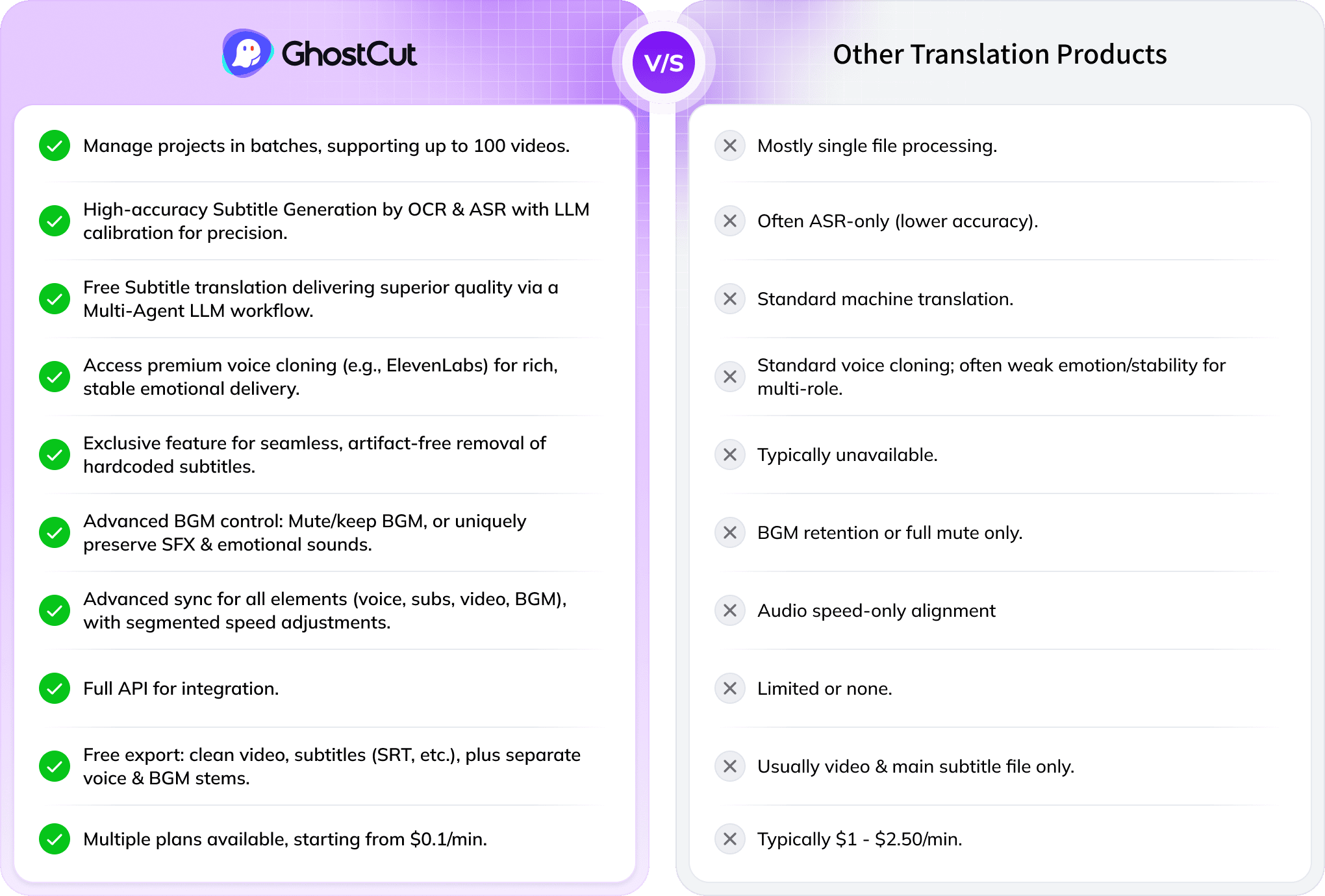
Every Algorithmic Optimization, Engineered for Quality Traditional-Chinese Video
Mastering Long-Form Arabic Drama & Multi-Character Dubbing
Translating a 100-minute Arabic drama with 4000+ lines and many characters into Traditional-Chinese is tough. Standard AI struggles to tell speakers apart, causing errors. GhostCut’s multi-modal AI (video, voice, text) excels in long-form, multi-speaker content, ensuring accurate, consistent character voices across entire series.
Translate Now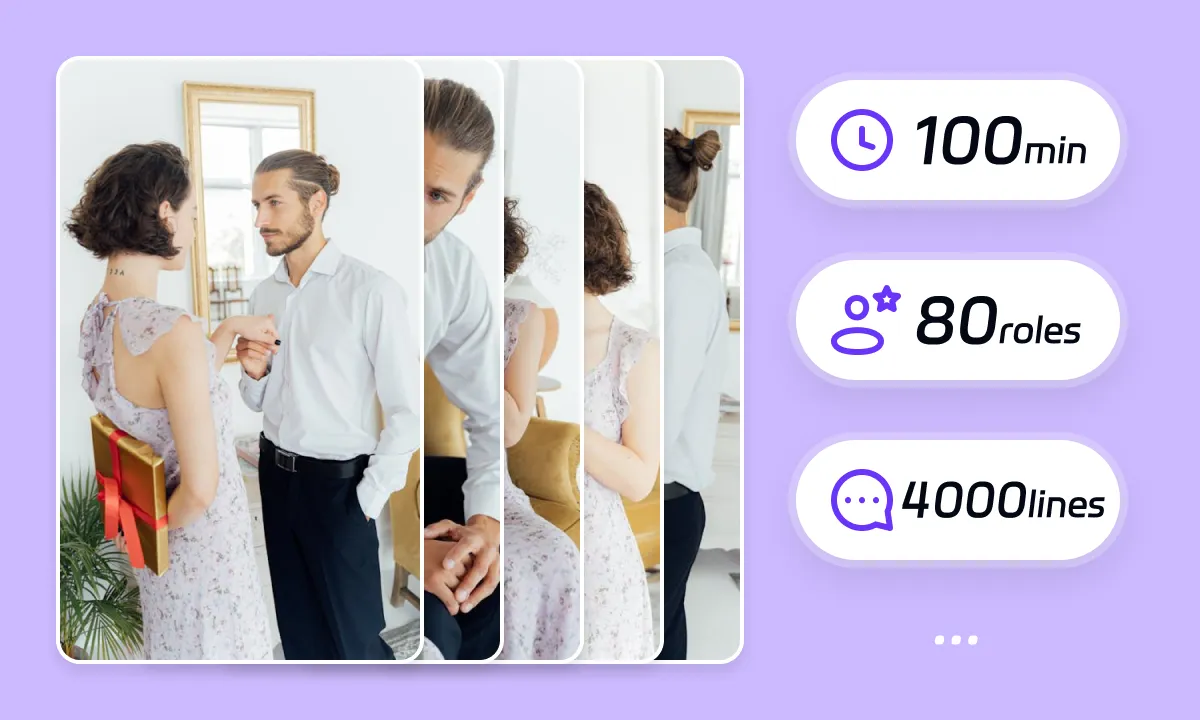
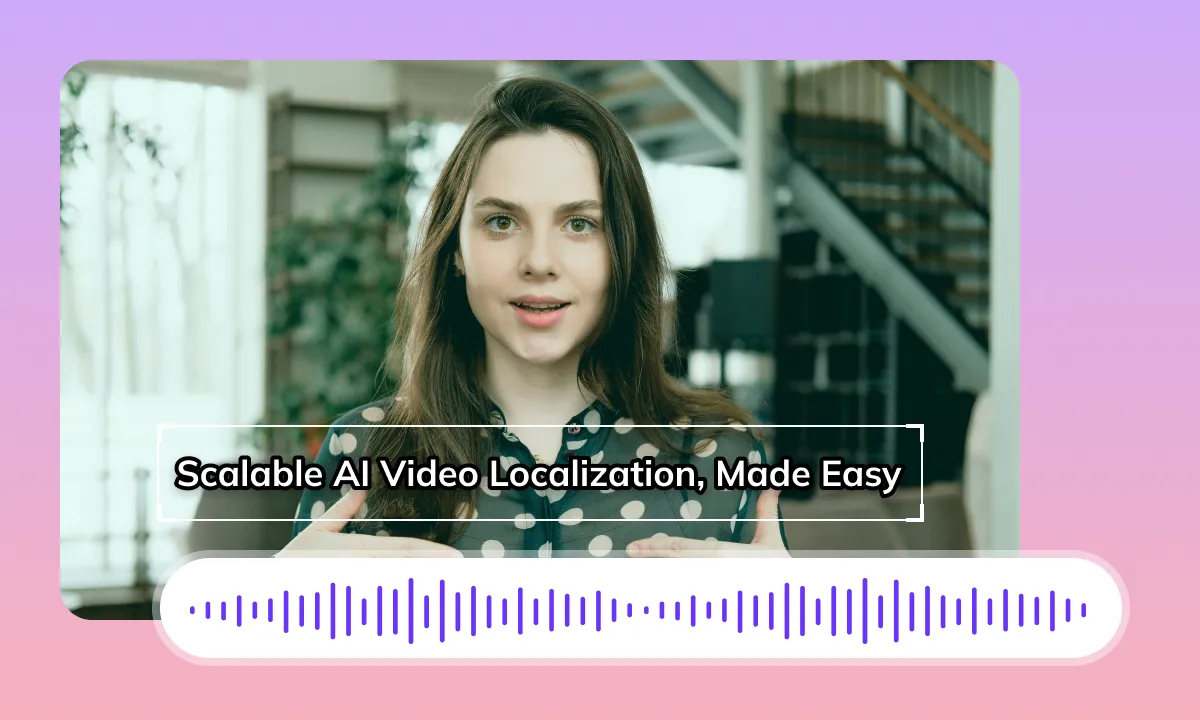
Seamless Traditional-Chinese Dubbing & Perfect Lip-Sync
GhostCut ensures natural Traditional-Chinese audio flow by treating related subtitles as whole ideas for TTS. It then precisely times new Traditional-Chinese subtitles. Since Arabic-to-Traditional-Chinese translation can change speech length, our AI expertly adjusts the new Traditional-Chinese audio, subtitles, video, and BGM to maintain perfect sync, just like a seasoned editor.
Translate NowBoost ROI with Flawless Arabic Subtitle Removal
Original Arabic hardsubs can limit your video's global appeal. GhostCut’s AI doesn't just blur; it intelligently reconstructs the background obscured by Arabic subtitles, even complex ones, for a perfectly clean, high-quality visual. This means better viewer engagement, longer watch times, and higher ROI.
Translate Now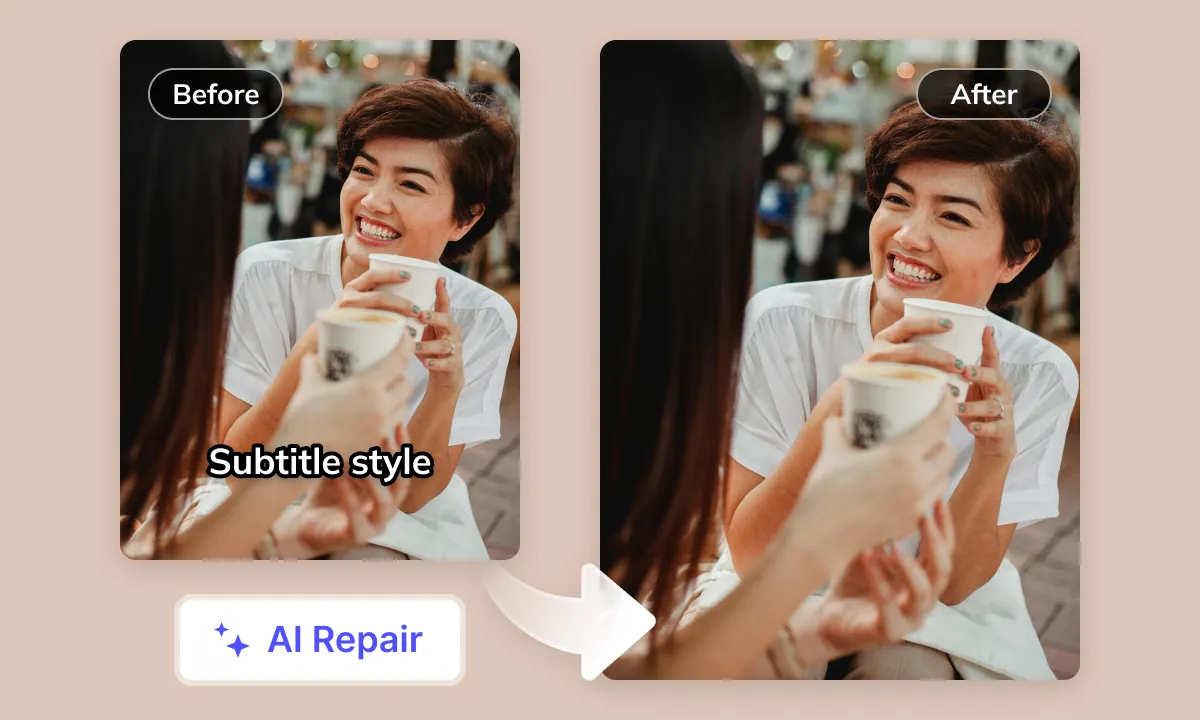
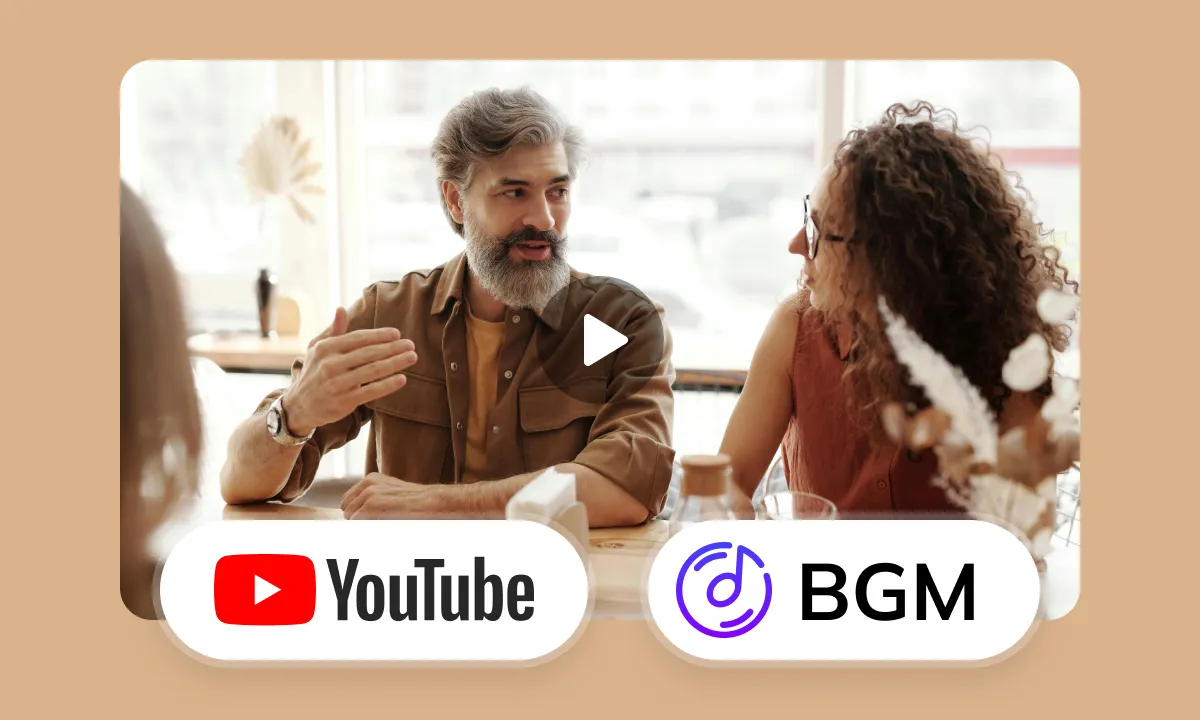
Smart Audio Control for YouTube Creators
Navigating BGM copyright on YouTube is tricky. GhostCut’s advanced audio separation isolates Arabic dialogue for translation, while intelligently managing BGM, sound effects, and even emotional expressions. Our "Keep SFX, Remove Music" option is a creator favorite for avoiding copyright issues without losing your video’s impact.
Translate NowBringing Arabic Videos to Traditional Chinese Viewers
The Middle East offers rich Arabic video content with unique appeal and vast potential. However, language barriers prevent this content from reaching the large Traditional Chinese market. Many excellent Arabic videos currently lack accurate Arabic-to-Traditional Chinese translation and dubbing, making understanding difficult for Traditional Chinese viewers. This significantly hinders the viewing experience and content reach. The market urgently needs professional AI solutions for Arabic-to-Traditional Chinese video translation and dubbing
Arabic Video Translation to Traditional Chinese: Challenges and Considerations
Hardcoded Subtitles Original Audio Interference
Videos with embedded Arabic hardcoded subtitles or original Arabic audio tracks, if not properly managed, can significantly detract from the viewing experience for Traditional Chinese audiences
Cultural, Structural, and Lexical Gaps
Arabic, with its deep cultural and religious roots, presents significant differences from Traditional Chinese in idioms, allusions, complex grammatical structures, and lexical nuances. Direct translation can easily lead to misunderstandings or even offense. The core challenge lies in accurately conveying meaning while ensuring cultural appropriateness
Character Traits Subtitle Layout
Arabic is a right-to-left flowing script, fundamentally different from Traditional Chinese's left-to-right block character system. When converting Arabic content into Traditional Chinese subtitles, critical considerations include text direction reversal, information density, and ensuring fluent readability within limited screen space. Proper line breaks and character count control are paramount
Pacing and Information Synchronization
The pacing of spoken Arabic may differ from Traditional Chinese. While both languages can convey high information density, during dubbing or subtitling, it is crucial to ensure that the translated text's read-aloud or display duration synchronizes with the original video's rhythm and visuals, preventing information overload or lag
Arabic AI Recognition Difficulties
Arabic's numerous dialectal variations, combined with multi-speaker dialogues, background noise, or non-standard pronunciations, can significantly reduce the accuracy of Automatic Speech Recognition (ASR) technology, thereby impacting subsequent translation quality
Scarcity of High-Quality Traditional Chinese AI Voices
While various Traditional Chinese AI voice options are available, there remains a relative scarcity of high-quality voices capable of naturally and emotionally rendering different contexts, such as news, drama, or dialogue
Lip-Sync Challenge
Arabic and Traditional Chinese pronunciations involve distinct mouth and lip movements. Achieving a high degree of lip synchronization with on-screen characters during Traditional Chinese dubbing is technically demanding and frequently poses significant challenges
Top AI Video Translation Standards
Ideal Arabic to Traditional Chinese AI translation should achieve: high-accuracy Arabic speech recognition - authentic, culturally sensitive Traditional Chinese translation - natural, fluid Traditional Chinese AI dubbing with strong lip-sync consideration - automated precise audio-video alignment and editing
Tackling Video Translation Challenges with AI Empowering your Arabic content for any worldwide scenario.
Your All-in-One AI Translation Studio
GhostCut offers more than just Arabic-to-Traditional-Chinese translation. It's a complete AI-powered workflow: subtitle extraction 、 removal 、 translation and proofreading to multi-character dubbing , BGM processing, and final rendering. Go from Arabic source to global-ready videos, effortlessly.
